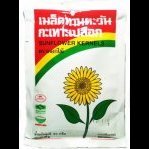Gender Expectations, Self-Control and How Thai Maechi and Nakmuay Ying Are in Parallel
-
Most Recent Topics
-
Latest Comments
-
By Kevin von Duuglas-Ittu · Posted
Sylvie politely and obliquely pointing out how insane the brutal knockout bonus is, with illustration of one of the great fighters of Thailand's past: -
By Kevin von Duuglas-Ittu · Posted
Note to self...want to write of the female fighter as axis mundi, the christological (in Weil-like sense) pinning of the body down the in the turpitude of struggle, eliciting the sparks of the divine. Soliciting the female as artist, who builds the ladder to Heaven of oneself. see Possession (1981). What do I mean by this? I think my short film was tapping into this intuition: -
By Kevin von Duuglas-Ittu · Posted
If you love clinch watch rounds 3-5 of Petchboonchu vs Yodwicha. It's three rounds of glory. It's amazing that in 10 short years this kind of performance and even fighting has been removed from the sport. Pure human art.
-
-
The Latest From Open Topics Forum
-
By Snack Payback · Posted
I can only comment on Perth. There's a very active Muay Thai scene here - regular shows. Plenty of gyms across the city with Thai trainers. All gyms offer trial classes so you can try a few out before committing . Direct flights to Bangkok and Phuket as well. Would you be coming over on a working holiday visa? Loads of work around Western Australia at the moment. -
By kkadzielna · Posted
Hi, I'm considering moving to Australia from the UK and I'm curious what is the scene like? Is it easy to fight frequently (proam/pro level), especially as a female? How does it compare to the UK? Any gym recommendations? I'll be grateful for any insights. -
By kkadzielna · Posted
You won't find thai style camps in Europe, because very few people can actually fight full time, especially in muay thai. As a pro you just train at a regular gym, mornings and evenings, sometimes daytime if you don't have a job or one that allows it. Best you can hope for is a gym with pro fighters in it and maybe some structured invite-only fighters classes. Even that is a big ask, most of Europe is gonna be k1 rather than muay thai. A lot of gyms claim to offer muay thai, but in reality only teach kickboxing. I think Sweden has some muay thai gyms and shows, but it seems to be an exception. I'm interested in finding a high-level muay thai gym in Europe myself, I want to go back, but it seems to me that for as long as I want to fight I'm stuck in the UK, unless I switch to k1 or MMA which I don't want to do. -
Hi all, Does anyone know of any suppliers for blanks (Plain items to design and print a logo on) that are a good quality? Or put me in the right direction? thanks all
-
The first fight between Poot Lorlek and Posai Sittiboonlert was recently uploaded to youtube. Posai is one of the earliest great Muay Khao fighters and influential to Dieselnoi, but there's very little footage of him. Poot is one of the GOATs and one of Posai's best wins, it's really cool to see how Posai's style looked against another elite fighter.
-
-
Forum Statistics
-
Total Topics1.4k
-
Total Posts11.5k
-
Footer title
This content can be configured within your theme settings in your ACP. You can add any HTML including images, paragraphs and lists.
Footer title
This content can be configured within your theme settings in your ACP. You can add any HTML including images, paragraphs and lists.
Footer title
This content can be configured within your theme settings in your ACP. You can add any HTML including images, paragraphs and lists.


Recommended Posts
Create an account or sign in to comment
You need to be a member in order to leave a comment
Create an account
Sign up for a new account in our community. It's easy!
Register a new accountSign in
Already have an account? Sign in here.
Sign In Now